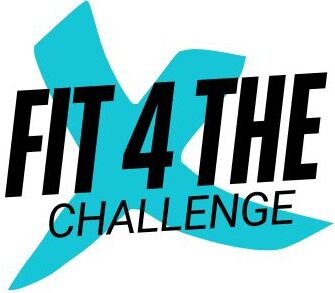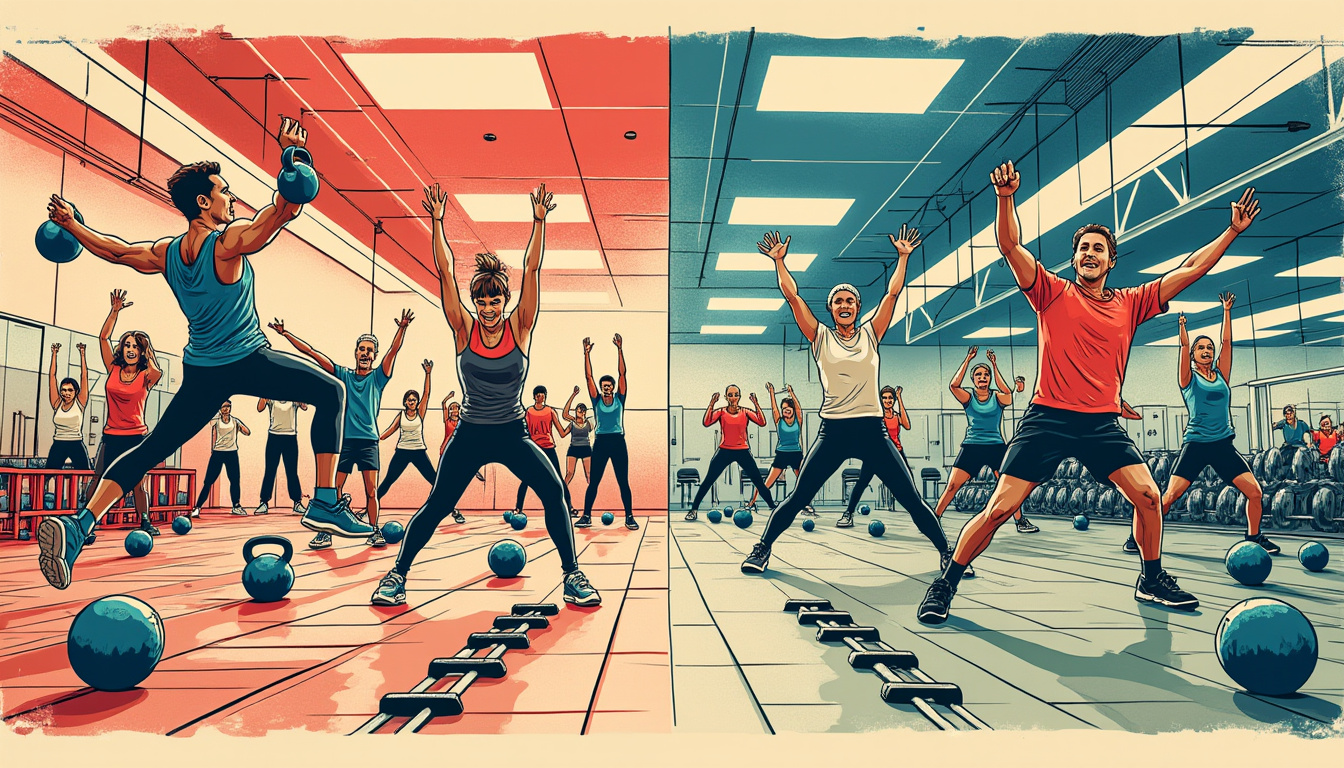In the ever-evolving landscape of fitness, understanding the nuances between functional fitness and traditional workouts is essential for anyone seeking to enhance their health and performance. As we stand at the crossroads of 2025, with a myriad of workout philosophies and trends, distinguishing these two prominent training styles can dramatically influence your approach to fitness and daily living. This article delves into the core differences, benefits, and applications of functional and traditional strength training, providing insights that cater to both seasoned athletes and beginners. Prepare to redefine your workout strategies and embark on a transformative fitness journey!
Must-visit hiking trails in Australia for nature lovers
Understanding Functional Strength Training
Functional strength training is designed to enhance your capability in everyday tasks by mimicking real-life movements. This training method prioritizes a holistic approach, targeting multiple muscle groups and joints simultaneously to improve your stability, mobility, and coordination.
- ✨ Multi-Planar Movements: Engages the body in an array of directions, including forward, backward, sideways, and rotational.
- ✨ Core Stability: Prioritizes strengthening the core, crucial for supporting movements throughout the body.
- ✨ Full-Body Integration: Utilizes exercises that recruit various muscle groups at once.
- ✨ Practical Applications: Aims to enhance your ability to perform daily activities while minimizing injury risks.
Examples of Functional Exercises
Functional exercises are designed with a practical focus, making them relevant for everyday activities. Here are several examples:
- 🚀 Squats: Mimic the act of sitting and standing, enhancing strength for daily movements.
- 🚀 Lunges: Improve balance and stability, critical for activities like walking and climbing stairs.
- 🚀 Deadlifts: Strengthen the back and legs for lifting objects from the ground.
- 🚀 Push-Ups: Enhance upper body strength while promoting core stability.
- 🚀 Planks: Build core strength and endurance, vital for overall stability.
Traditional Strength Training Explained
On the other side of the spectrum, traditional strength training typically isolates specific muscle groups to promote muscle growth, strength, and endurance. Often performed in a controlled manner, this training method employs weight machines or free weights to achieve targeted results.
- 🔥 Isolated Movements: Focuses on single muscle groups, aiming to boost size and strength effectively.
- 🔥 Linear Progression: Gradually advances both the weight and intensity, ensuring continuous improvement.
- 🔥 Machine and Free Weight Usage: Incorporates various gym equipment for exercise execution.
- 🔥 Muscle Hypertrophy: Concentrates on increasing muscle size and definition through systematic training.
Examples of Traditional Exercises
Traditional strength training consists of well-known isolated exercises that target specific muscle groups, such as:
- 🌟 Bicep Curls: Focus on isolating and developing the biceps.
- 🌟 Leg Press: Target the quadriceps and hamstrings effectively.
- 🌟 Bench Press: Develop strength in the chest, shoulders, and triceps.
- 🌟 Lat Pulldowns: Strengthen the back muscles comprehensively.
- 🌟 Leg Extensions: Primarily strengthen the quadriceps.
Functional vs Traditional Strength Training: A Detailed Comparison
The phrase “just want to be fit for everyday life” encapsulates the essence of functional strength training. By preparing your body for daily activities—such as lifting children, carrying groceries, or simply getting out of bed—this approach is inherently practical. In contrast, traditional strength training typically showcases more significant muscle mass and strength development, akin to what you might witness in competitive weightlifting circles.
While both training methodologies hold significant merit, their applications and benefits can differ greatly:
| Aspect | Functional Strength Training | Traditional Strength Training |
|---|---|---|
| Focus | Full-body movement mimicking everyday tasks | Isolated muscle group strength and hypertrophy |
| Equipment | Kettlebells, resistance bands, body weight | Barbells, dumbbells, weight machines |
| Results | Improved balance, flexibility, mobility | Increased muscle size and raw strength |
| Injury Risk | Lower risk due to natural movements | Higher risk if performed incorrectly |
Another crucial difference lies in the associated results. Traditional strength training may lead to larger muscles and raw power gains. However, functional training fosters improvements in balance, flexibility, and overall mobility. So while you may not develop bulging biceps, you’ll experience enhanced ease in activities like reaching for items on high shelves or playing energetically with your dog. Additionally, functional training often engages more muscle groups, leading to a higher calorie burn during workouts, which can be motivating for those looking to shed some pounds.
Benefits of Functional Strength Training vs Traditional Strength Training
Both functional and traditional strength training offer unique advantages that cater to varying fitness preferences and aspirations.
- ✨ Benefits of Functional Strength Training:
- Enhanced daily performance through practical movements.
- Reduced injury risks by mirroring real-life actions.
- Improved posture and overall balance along with core stability.
- Increased flexibility through multi-directional movements.
- Greater calorie expenditure during workouts compared to traditional methods.
- Enhanced daily performance through practical movements.
- Reduced injury risks by mirroring real-life actions.
- Improved posture and overall balance along with core stability.
- Increased flexibility through multi-directional movements.
- Greater calorie expenditure during workouts compared to traditional methods.
- 🔥 Benefits of Traditional Strength Training:
- Effective for building larger, well-defined muscles.
- Significantly enhanced muscle strength capabilities.
- Structured progress tracking with clear benchmarks.
- Ideal for bodybuilding or powerlifting competition prep.
- Accessible methods for targeting specific muscle groups effectively.
- Effective for building larger, well-defined muscles.
- Significantly enhanced muscle strength capabilities.
- Structured progress tracking with clear benchmarks.
- Ideal for bodybuilding or powerlifting competition prep.
- Accessible methods for targeting specific muscle groups effectively.
Determining Your Ideal Strength Training Approach
Making the choice between functional and traditional strength training hinges on your fitness objectives and personal lifestyle needs. Here are some factors to consider:
When to Choose Functional Strength Training
- 🌟 You seek to enhance overall fitness while improving your ability to navigate daily tasks.
- 🌟 You prefer a balanced workout routine that prioritizes diversity and adaptability.
- 🌟 You aim to minimize injury risks while improving your mobility.
- 🌟 Dynamic, full-body workouts resonate more with your fitness approach.
When to Opt for Traditional Strength Training
- 🚀 You want to build muscle mass and amplify strength in specific areas.
- 🚀 You enjoy structured, isolated workouts that focus on particular muscle groups.
- 🚀 Your objective includes specific muscle definition, coupled with hypertrophy.
- 🚀 You plan to prepare for competitions like bodybuilding or powerlifting.
Integrating Both Functional and Traditional Approaches
For many individuals, the optimal path lies in integrating elements from both functional and traditional strength training into a cohesive workout routine. Such a hybrid approach not only allows you to hone your skills in isolation but also enhances your overall fitness by bridging the gap between strength and functionality.
Here’s a sample integrated workout plan to help you maximize the strengths of both methodologies:
| Day | Workout Type | Exercises |
|---|---|---|
| Day 1 | Functional Training | Squats, Push-Ups, Planks, Lunges, Deadlifts (3 sets of 15 reps) |
| Day 2 | Traditional Upper Body Training | Bench Press, Bicep Curls, Tricep Extensions, Lat Pulldowns (3 sets of 12 reps) |
| Day 3 | Active Recovery | Walking, cycling, yoga or Pilates for flexibility |
| Day 4 | Traditional Lower Body Training | Leg Press, Leg Extensions, Hamstring Curls, Calf Raises (3 sets of 12 reps) |
| Day 5 | Core and Balance Functional Training | Russian Twists, Bird Dogs, Stability Ball Passes, Standing Balance Drills (3 sets of 15 reps) |
This blended workout routine aims to lift the best attributes from both training styles while encouraging you to explore various fitness methods. Additionally, incorporating modern platforms like Peloton can enhance your functional training classes with dynamic movements, providing guided workouts tailored for practical strength enhancement. Don’t forget to check out classes that feature tools like TRX or resistance bands for added variety!







